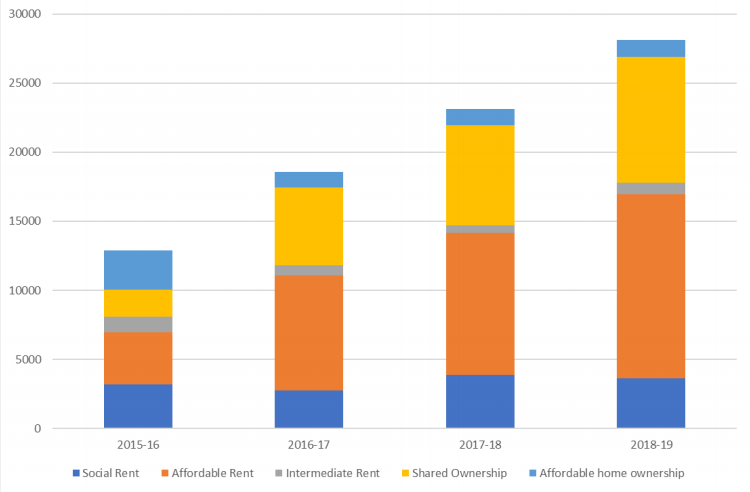Describing his controversial plans to scrap the contributions that developers make to affordable housing and other local infrastructure, Secretary of State Robert Jenrick told the BBC: “This isn’t giving more power to developers – we’re actually asking them to pay more.” As the interviewer Nick Robinson reminded him, he was asking an awful lot if he expects people to trust him on this issue, when not long ago he’d helped a Tory party donor avoid developer contributions on a major development in London. “You need to win people’s trust, Mr Jenrick,” he pointed out.
Ironically, developer contributions (“section 106” in the jargon) weren’t “a product of the 1940s Attlee government” as Jenrick told Today listeners, but of the Thatcher government, shortly before it came to its end in 1990. This is not the first time that the system has come under attack – the combined forces of George Osborne and Eric Pickles during the coalition government worked to erode its effects, pressured (as ever) by developers complaining about “red tape” and giving as their excuse for cutting it the need to revive housebuilding and the housing market after the global financial crisis.
But it did not work. Developer contributions went from strength to strength. Back in 2000/01 they provided only four percent of affordable housing in England, and under the last Labour government this barely changed, reaching less than six per cent by 2010/11. It was under the coalition and then Conservative governments that developer contributions really took off. By 2012/13 they provided a quarter of affordable housing output and by 2018/19 this had reached almost half of the total – all of them homes built without government grant. The harsh reality was that, because the government had cut the grants budget, developer contributions were vital if some reasonable level of affordable housing output was to be sustained.
Figure 1: Additional affordable housing supply started, agreed through S106 agreement 2015-2019, England

Infrastructure Levy in England in 2018-19 MCHLG, 2020
A report released quietly last week shows their importance even more sharply. The chart above is taken from the report and shows the recent growth in affordable housing supply resulting from section 106 agreements, broken down by tenure. The report says that contributions towards affordable housing alone were worth a total of £4.7bn in 2018/19; this was two-thirds of the total value of contributions, the remaining third going towards local infrastructure such as roads and schools.
To put this in perspective, the new Affordable Homes Programme announced by the Chancellor in March, and confirmed in his Summer Statement, is worth just £2.44bn annually, and this was flagged as a significant increase on the current programme, worth £1.95bn each year. In other words, what developers contributed to the delivery of affordable housing in 2018/19 is more than twice as much as the government paid out in grants.
The report has another statistic: 44,000 affordable homes were agreed in new planning obligations in 2018/19. This is a fall since 2016/17, but the value of this housing has increased over the same period due to an increase in house prices in many areas, with higher developer contributions. In 2018/19, the total of affordable homes built was 57,185, the highest in the last four years. Obviously the 44,000 new units arising from developer contributions will be spread over more than one year, but this comparison confirms their huge importance.
The new proposals would sweep away the existing section 106 agreements, which are negotiated locally, and replace them with a fixed national levy that would be based on the value of new developments. The amount would be set nationally but collected and used by local planning authorities.
What Mr Jenrick wants us to believe is that developers will pay more under this new system and that more affordable homes will be built as a result. He says the current system heavily favours the big volume housebuilders, which is true, and there is plentiful evidence of their finding ways to circumvent the system, not only by arranging to sit next to Mr Jenrick at Tory party fundraising dinners.
Indeed, his proposals do favour small builders, by proposing to exempt small developments of under 50 homes from the new levy that would replace section 106, at least for a limited period. But this worsens Mr Jenrick’s task, since small schemes currently do contribute to affordable housing. If he’s to be believed, and overall payments by developers towards affordable housing are to be even higher than the current £4.7bn, then big developers will have two extra burdens.
They’ll not only have to shoulder the contributions currently carried by small builders but will need to pay more on top of that. Developers have paid over £12 million to the Tory party since Boris Johnson took office: is this the return they expected for their investment?






